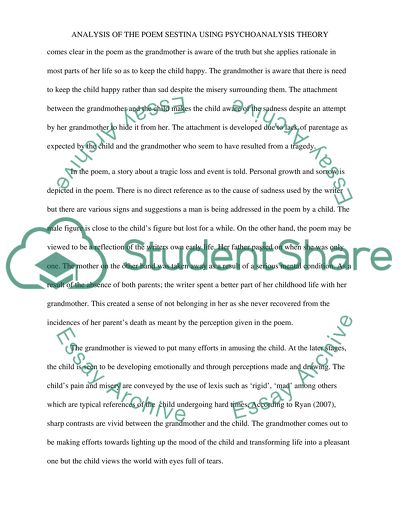Cite this document
(“Analysis of the Poem Sestina by Bishop Using the Psychoanalysis Theory Essay”, n.d.)
Retrieved from https://studentshare.org/literature/1465602-analyse-sestina-using-the-psychoanalysis-theory
Retrieved from https://studentshare.org/literature/1465602-analyse-sestina-using-the-psychoanalysis-theory
(Analysis of the Poem Sestina by Bishop Using the Psychoanalysis Theory Essay)
https://studentshare.org/literature/1465602-analyse-sestina-using-the-psychoanalysis-theory.
https://studentshare.org/literature/1465602-analyse-sestina-using-the-psychoanalysis-theory.
“Analysis of the Poem Sestina by Bishop Using the Psychoanalysis Theory Essay”, n.d. https://studentshare.org/literature/1465602-analyse-sestina-using-the-psychoanalysis-theory.


